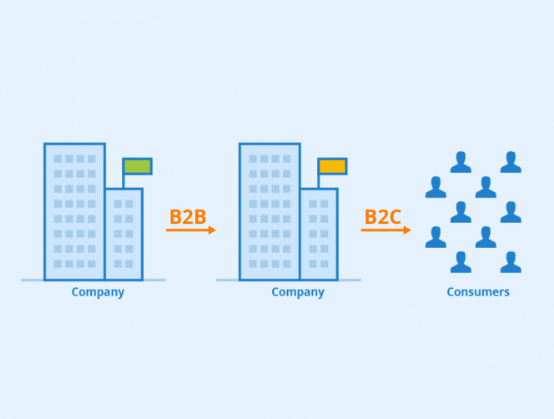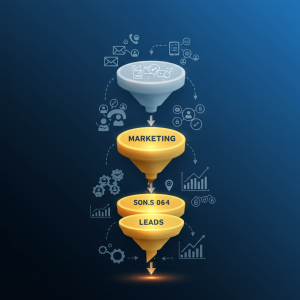What is B2B Outbound Marketing?

The business landscape continuously evolves with digital transformation, yet certain fundamentals remain steadfast in their importance. B2B outbound marketing represents one such fundamental—a strategic approach that continues delivering results despite predictions of its demise. While inbound marketing garners significant attention in contemporary marketing discussions, outbound strategies maintain crucial roles in business-to-business sales environments.
Defining B2B Outbound Marketing
At its core, B2B outbound marketing encompasses proactive initiatives where businesses directly approach potential clients rather than waiting for those prospects to discover them organically. Unlike consumer-focused campaigns, B2B outbound strategies target other organizations, accounting for their complex purchasing processes, multiple stakeholders, and longer decision cycles.
This approach contrasts with inbound methodologies, which focus on creating valuable content that attracts potential customers to a business when they’re actively searching for solutions. Outbound strategies instead identify promising prospects and initiate direct contact through various channels to generate interest, even when those organizations aren’t actively seeking solutions.
The distinction matters significantly because B2B purchasing rarely follows the same patterns as consumer buying. Enterprise decisions typically involve multiple stakeholders, formal evaluation processes, and substantial consideration periods—characteristics that often favor direct engagement over passive content consumption.
Key Components of B2B Outbound Marketing
Several elements define modern B2B outbound approaches, each serving distinct purposes within comprehensive marketing strategies.
Cold email campaigns remain surprisingly effective despite their reputation for low response rates. The key lies in personalization, relevance, and timing. Sophisticated outbound teams research prospects thoroughly before crafting messages that address specific business challenges rather than sending generic templates. This targeted approach dramatically improves engagement compared to mass-email tactics.
Similarly, targeted LinkedIn outreach has emerged as a powerful channel for B2B prospecting. Sales professionals leverage this platform to establish connections with decision-makers, participate in relevant industry discussions, and share insights that demonstrate expertise. The social nature of LinkedIn creates contexts for relationships that feel less transactional than traditional cold calls.
Speaking of calls, strategic telemarketing has evolved considerably from its scatter-shot origins. Modern B2B cold calling focuses on highly researched prospects with clear qualification criteria rather than working through generic contact lists. According to research from RAIN Group, 82% of buyers accept meetings with sellers who proactively reach out—provided those sellers demonstrate genuine understanding of their business challenges.
Account-based marketing (ABM) represents perhaps the most sophisticated evolution of outbound strategies. This approach treats individual prospect companies as distinct markets, developing highly customized campaigns for each target account. Rather than broadcasting identical messages widely, ABM coordinates personalized touchpoints across multiple channels and decision-makers within specific organizations.
When B2B Outbound Marketing Proves Most Valuable
Certain business scenarios particularly benefit from outbound approaches. Understanding these contexts helps organizations allocate marketing resources appropriately rather than dogmatically following either strictly inbound or outbound philosophies.
When selling complex solutions with high contract values, the economics typically support dedicated outbound efforts. The potential lifetime value of enterprise clients justifies significant investment in research, personalization, and persistent outreach. A single closed enterprise deal often delivers returns that vastly exceed the cost of dozens or hundreds of outreach attempts.
Similarly, when target markets include limited universes of potential customers, waiting for inbound discovery becomes impractical. Industries like aerospace manufacturing, specialized industrial equipment, or enterprise software aimed at specific verticals simply don’t contain enough potential buyers to rely solely on inbound approaches. Rather than hoping the right prospects find them, successful companies in these sectors proactively identify and pursue qualified opportunities.
New market entry situations also benefit from outbound strategies. When businesses expand into unfamiliar territories—whether geographic regions or industry verticals—they typically lack established awareness and search visibility. Direct outreach creates immediate visibility while inbound foundations develop gradually over time.
For more insights about when outbound approaches deliver optimal results, visit our comprehensive B2B marketing guide where we explore contextual strategy selection in greater depth.
Modern Techniques Transforming B2B Outbound Marketing
Today’s most effective B2B outbound marketing bears little resemblance to the indiscriminate cold calling of previous decades. Several sophisticated approaches characterize contemporary outbound strategies in high-performing organizations.
Sales intelligence tools have fundamentally transformed prospect research capabilities. Platforms like ZoomInfo, LinkedIn Sales Navigator, and others provide detailed insights about prospect organizations including recent leadership changes, growth initiatives, technology implementations, and other signals that indicate receptiveness to specific solutions. This intelligence allows outbound teams to focus efforts on companies demonstrating relevant trigger events rather than reaching out blindly.
Multichannel coordination represents another evolution in outbound approaches. Rather than relying exclusively on cold calls or emails, effective programs orchestrate touchpoints across multiple channels including social media engagement, direct mail, phone calls, email sequences, and even targeted advertising. According to Harvard Business Review research, prospects typically require 7-12 touches before engaging meaningfully—making coordinated multichannel approaches significantly more effective than single-channel efforts.
Personalization has advanced well beyond simply inserting prospect names into templates. Sophisticated outbound programs leverage research to reference specific business initiatives, industry challenges, or organizational priorities in their outreach. This relevance dramatically improves response rates compared to generic messaging.
Measuring B2B Outbound Marketing Effectiveness
Performance measurement represents a crucial aspect of outbound marketing management, particularly given the significant resource investment these programs typically require.
Leading organizations track metrics throughout the outbound funnel rather than focusing exclusively on closed revenue. Early indicators like connection rates, meeting acceptance percentages, and qualification rates provide insights into program health before revenue materialization. These metrics help teams identify process issues requiring adjustment rather than waiting months to evaluate results in complex sales cycles.
Attribution modeling presents particular challenges for outbound marketing given the multichannel nature of most B2B sales processes. Sophisticated organizations implement tracking mechanisms that acknowledge both first-touch and influential touchpoints throughout buyer journeys rather than simplistically crediting either initial outreach or final conversion events exclusively.
Cost per acquisition analysis often reveals surprising insights about outbound efficiency. While outbound approaches typically cost more per lead than inbound methods, the higher qualification levels and larger average contract values frequently deliver superior economics on a cost-per-acquired-dollar basis, particularly in enterprise contexts.
Integration with Broader Marketing Strategy
The most successful B2B organizations reject false dichotomies between outbound and inbound approaches, instead developing integrated strategies that leverage both methodologies appropriately.
Content plays a crucial role in modern outbound approaches despite its association with inbound marketing. Effective outbound teams leverage thought leadership assets, case studies, and industry research within their outreach sequences rather than immediately pushing sales conversations. This valuable content establishes credibility and demonstrates expertise even within proactive outreach contexts.
Similarly, sales and marketing alignment becomes particularly crucial when implementing outbound programs. The traditional handoff model where marketing generates leads and sales pursues them breaks down with sophisticated outbound approaches. Instead, collaborative account planning, shared success metrics, and coordinated account-based campaigns characterize high-performing organizations.
Conclusion
B2B outbound marketing continues delivering significant value despite shifting marketing landscapes and persistent predictions of its obsolescence. Rather than viewing outbound approaches as outdated tactics, forward-thinking organizations recognize their essential role within comprehensive go-to-market strategies, particularly for complex solutions with high contract values and limited universes of potential buyers.
Understanding outbound marketing’s modern manifestations—including sophisticated research capabilities, multichannel orchestration, and personalized messaging—helps businesses implement these approaches effectively rather than reflexively dismissing them as outdated or embracing them without strategic consideration.
The most successful organizations develop nuanced perspectives on channel selection rather than dogmatically committing to either purely outbound or inbound philosophies. This balanced approach recognizes different buying scenarios and prospect preferences require different engagement strategies, allowing businesses to meet potential customers wherever they are in their buying journeys.





